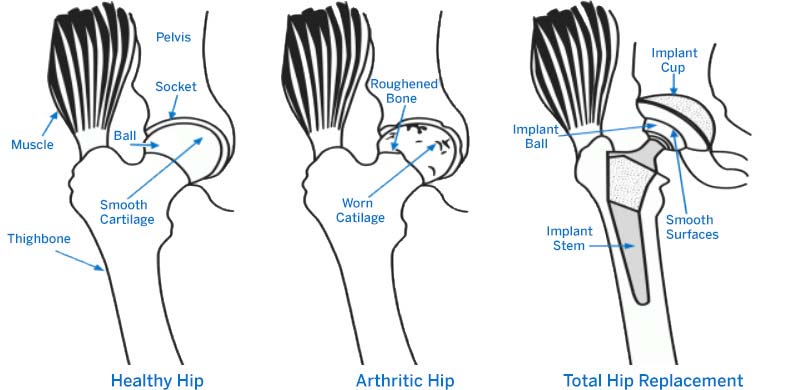Minimally invasive hip replacement.
Minimally invasive hip replacement precautions.
Overview traditional hip replacement surgery involves making an incision on the side of the hip lateral approach or the back of the hip posterior approach.
A cut will be made in one of three places on the back of the hip over the buttock on.
A minimally invasive total hip replacement uses a smaller cut incision than a traditional total hip replacement.
Minimally invasive hip replacement is a technique used to perform hip replacement surgeries.
It also uses special tools.
Using a standard approach a surgeon can transition to a minimally invasive approach by gradually shortening the incision to 4 inches or less.
The goals of minimally invasive hip replacement surgery are to perform the operation with a smaller incision and less trauma to the deep tissues to reduce postoperative discomfort and to speed discharge from the hospital.
Minimally invasive and small incision total hip replacement surgery is an evolving area and more research is needed on the long term function and durability of the implants.
Direct superior approach.
If you have any questions about direct anterior minimally invasive hip replacement feel free to s chedule an appointment at 206 368 6360.
Minimally invasive anterolateral hip replacement.
Minimally invasive anterolateral total hip replacement surgery is a specific approach to the hip that minimizes surgical trauma to soft tissues by working between muscle groups with a single small incision.
The direct superior approach has been developed as a minimally invasive technique to enter the hip joint without causing damage to some key muscle groups.
The direct superior approach is a surgical technique to gain access to the hip joint.
Also fewer muscles around the hip are cut or detached.
When performing a hip replacement your surgeon can get to the hip joint from the front from the side or from the back.
To perform this surgery.
Other names for the procedure are minimally invasive or muscle sparing hip arthroplasty.
There is no detachment or splitting of muscles that takes place during this procedure.
According to the centers for disease control and prevention cdc over 320 000 hip replacements were done.
The benefits of minimally invasive hip replacement have been reported to include less damage to soft tissues leading to a quicker less painful recovery and more rapid.
This article is designed to give you a comprehensive review of what minimally invasive hip replacement surgery is all about.
Proponents of minimally invasive hip replacement say small incision operations can lessen blood loss ease post operative pain trim hospital stays improve scar appearance and speed healing.

